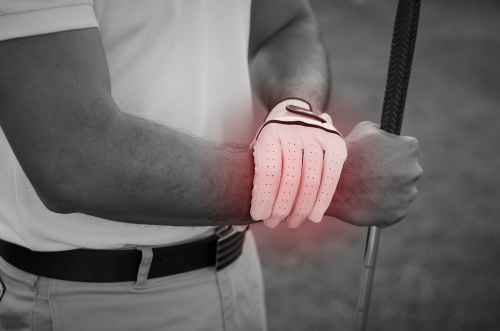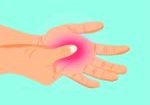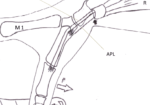Which is better for DeQuervain’s: Splinting or Injection?
Filed under Reviews
Rapid Review
Cavaleri, R., Schabrun, S. M., Te, M., & Chipchase, L. S. (2016). Hand therapy versus corticosteroid injections in de Quervain’s disease treatment: A systematic review and meta-analysis. Journal of hand therapy: official journal of the American Society of Hand Therapists, 29(1), 3–11. https://doi.org/10.1016/j.jht.2015.10.004
The Skinny: DeQuervain’s Tenosynovitis is a stenosing tenosynovial inflammation affecting the abductor pollicis longus and the extensor pollicis brevis in the 1st dorsal compartment. The treatment varies from conservative the surgical, and this review focuses on conservative treatment.

The authors performed a systematic review to compare the effectiveness of steroid injections with 1.) hand therapy splinting alone, 2.) hand therapy splinting with steroid injections, and 3.) steroid alone in treating DeQuervain’s.
In the Weeds: A total of 6 articles were included in the review, which included 334 patients. The mean age of patients was between 27 and 44 years. Three studies compared steroid injections with splinting, and three compared splinting with injections alone. No studies were included that looked at other forms of therapy such as physical agent modalities, exercise, and manual therapy. The time the splint was worn was not specified in the studies.
Bringing It Home: Both groups, including the corticosteroid injection and splinting group, improved overall function and decreased pain. More patients were treated successfully when combined splinting and steroid injection were used together.
Rating: 4/5 The study’s limitations include the lack of specification on the type of splint used and the specific regime. The outcomes measures did not look at the quality of life; instead, they focused on treatment success rate and pain relief. Research into different treatment regimes is needed to make sound recommendations for splinting duration.
1 Comment
Leave a Comment
More To Read
Is therapy needed after a distal radius fracture?
Coughlin T, Norrish AR, Scammell BE, Matthews PA, Nightingale J, Ollivere BJ. Comparison of rehabilitation interventions in nonoperatively treated distal radius fractures: a randomized controlled trial of effectiveness. Bone Joint J. 2021Jun;103-B(6):1033-1039. doi: 10.1302/0301-620X.103B.BJJ-2020-2026.R1.Epub 2021 Apr 30. PMID: 33926211. The Skinny: Individuals with distal radius fractures are very common in the hand therapy world. This…
Read MoreCMC Arthritis Orthosis in the Hand: Mechanics and Purpose
One of the most common diagnoses we see in hand therapy is osteoarthritis of the 1st carpo-metacarpal joint where the metacarpal articulates with the trapezium. Also known as basal joint arthritis (CMC arthritis), this causes pain, joint deformity, loss of strength and loss of function. Patients come to us looking for relief of symptoms and…
Read MoreHow much pain should a patient have during and after therapy?
How much pain should a patient have during and after therapy? As we all know pain is somewhat subjective. It can be hard to determine how much pain a patient should experience with the type of injury as well as the type of therapy intervention and hand pain treatment. The saying of “no pain, no…
Read MoreA Better De Quervain’s Tenosynovitis Test
J. F. Goubau, L. Goubau, A. Van Tongel, P. Van Hoonacker, D. Kerckhove, B. Berghs (2013).The wrist hyperflexion and abduction of the thumb (WHAT) test: a more specific and sensitive test to diagnose de Quervain tenosynovitis than the Eichhoff’s Test. J Hand Surg Eur Vol. 2014 Mar; 39(3): 286–292. Published online 2013 Jan 22. doi:…
Read MoreSign-up to Get Updates Straight to Your Inbox!
Sign up with us and we will send you regular blog posts on everything hand therapy, notices every time we upload new videos and tutorials, along with handout, protocols, and other useful information.







Great way of spreading many studies into a short outcome.